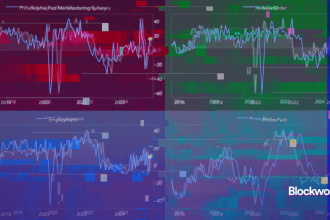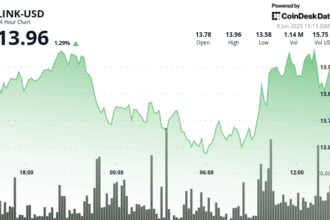SEASONED JOURNALISM HEADER
While Bitcoin experienced another trading surge recently, mirroring previous rallies, it subsequently retreated late Tuesday, trading approximately 1.4% lower intraday, with prices hovering around $108,600.
The current bearish drift resembles a previous trajectory seen three weeks ago, where Bitcoin approached a new all-time high. That time, it escalated from roughly $103,000 to levels exceeding $110,000 in about two days.
Analysis suggests this latest surge may largely be attributable to leverage covering, driven by short liquidations, rather than new spot investment. This pattern aligns with observations noted by Noelle Acheson in her “Crypto is Macro Now” newsletter regarding the late-May market dynamics.
Bitcoin’s trading pattern increasingly exhibits characteristics akin to major technology stocks, a departure from the “digital gold” narrative prevalent in earlier years. A significant indicator is its high correlation with the Nasdaq Composite (0.81) and, more recently, a noted negative correlation with gold (-0.07) based on recent market data from Yahoo Finance.
A focal point for critics of the “digital gold” thesis was April’s market movement. In the aftermath of events on April 2, Bitcoin experienced a notable 11% decline. Significantly, the cryptocurrency rebounded robustly, recording a 29% gain since that date, surpassing the performance of both the S&P 500 and the Nasdaq Composite during the subsequent period.
Looking forward, several factors warrant consideration. Prominently, Bitcoin demonstrates sensitivity to macroeconomic indicators such as interest rate decisions and inflation data. Furthermore, its trajectory is distinct from that of major technology companies, particularly concerning vulnerabilities to escalating tariff policies. The significant year-to-date declines observed in companies like Apple and Alphabet contrast sharply with Bitcoin’s 16% appreciation.
Monitoring Q2 earnings trends among leading U.S. technology firms appears essential. Currently, six out of the eight major U.S. tech stocks (a “Magnificent Seven” grouping plus Broadcom) face potentially concerning downward earnings revisions for the quarter. Year-to-date underperformance is noted by several of these aggressive tech names versus broader indices.
Given these factors, it remains plausible that Bitcoin may continue to displace the performance of these sentiment-vulnerable technology stocks, at least until more definitive signs emerge from ongoing international trade discussions. As a concluding caveat, this perspective represents an analytical observation by your local writer, not formal investment advice.
The conclusion of the second quarter offers no immediate resolutions, leaving the future performance dependent on prevailing market conditions.












